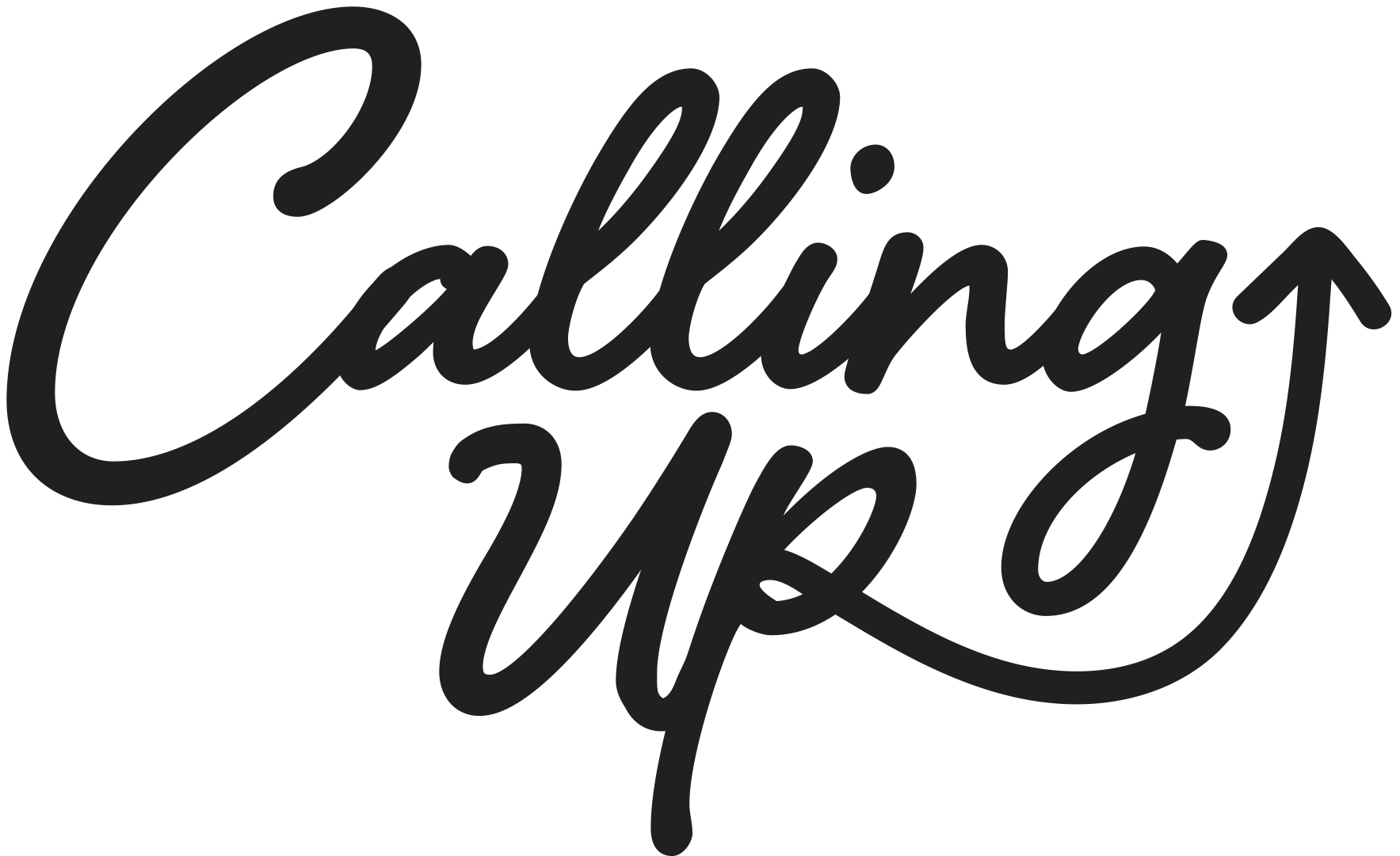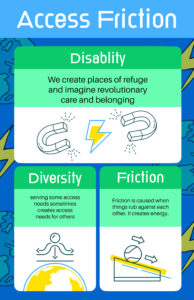Calling Up Justice is creating a resource on access frictions because there are multiple meanings and applications of the term. Access frictions refer to the challenges and barriers that individuals face when trying to access resources, services, or activities. These barriers can arise due to various factors, such as physical, sensory, or cognitive disabilities. Access frictions can occur when serving one access need creates an access barrier for someone else. In the context of disability, access frictions are the obstacles that disabled people face when trying to access everyday services that non-disabled people often take for granted.
We don’t like the term “competing access needs” because this creates a competition that limits thinking and doesn’t help to address access barriers. It’s important to recognize that access frictions are not a competition. Each person’s access needs are valid, and it’s not helpful to think of them as competing with one another. Instead, we should focus on finding ways to accommodate everyone’s needs to the best of our ability.
Instead, the concept of access frictions emphasizes the need for flexibility, collaboration, and open communication to find solutions that benefit everyone. This approach recognizes that access needs are not in competition with one another but rather reflect the diverse perspectives and needs of different individuals and groups.While access frictions are primarily associated with disabled people, the concept is useful in non-disabled exchanges as well.
For example, in a workplace setting, access frictions may arise when different individuals require different working conditions, such as a quiet environment for focused work or a collaborative space for group projects. By acknowledging these access frictions and working collaboratively to find solutions, everyone can access the resources and spaces they need to be productive and successful.
Importantly, access frictions are not necessarily negative, as they can also serve as a source of energy and motivation to drive positive change. Friction can create conflict that serves the interests of supremacy culture, such as reinforcing ableist assumptions or perpetuating systemic discrimination. However, when harnessed effectively, the energy generated by access frictions can be used to fuel accessible design and promote solidarity and inclusivity.
This document is intended for Calling Up Justice collaborators to understand how we use the term access frictions. Moving forward, we hope that the community will contribute to the conversation and create citations in the Critical Design Lab at http://mapping-access.com to further develop our understanding of this concept and its applications. By working together, we can create a more inclusive and accessible society that benefits all individuals, regardless of ability or background.
Here’s a few resources we found after writing up this resource that explore the term in different ways.
https://makeitfable.com/article/ive-had-enough-when-access-friction-becomes-an-access-barrier/

